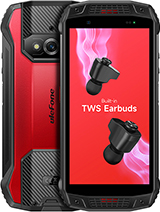

Transplants from other human donors are often rejected by the body, so patients have to take anti-rejection drugs that dampen their immune systems. Rather than 3D printing plastics or metals, 3D bioprinting prints real human cells, in scaffolds, to create living 3D printed organ tissues.

They can be produced using standard 3D printer filaments on an FDM 3D printer for less than your average meal out at a restaurant.ģD printing applications in leg prosthetics are far less advanced however, with difficulties supporting the weight of our upper bodies. Standard prosthetics can take weeks to make, whereas 3D printed prosthetics only require a 3D scan of the area, and the parts can be made in hours.
Other uses for rapidcart pro free#
3D designers have optimized and improved a number of prosthetic hands over the years, and thousands of free 3D printed prosthetics have since been donated. The many uses of 3D printing extend to arm prosthetics, with non-profit organization E-Nable bringing together thousands of volunteers who 3D print prosthetics for those without a hand, wrist or elbow.

Around 1 in 1,900 newborns in the are born with a limb deficit, so it’s crucial we find efficient ways to produce limb prosthetics for them. Current prosthetics can cost thousands of dollars to produce, and, if you’re still growing, mean you have to keep replacing them as you get bigger. ProstheticsģD printing’s custom, one-off methods make it perfect for prosthetics.
Other uses for rapidcart pro full#
Polyjet 3D printers are commonly used for their accuracy and full color 3D printing abilities. These better trained medical staff traverse the steep learning curve faster than ever with more effective practice.

Complex organ models can be 3D printed that mimic real hearts, lungs and other organs, so medical students can practice on them and perfect their technique before ever operating in a situation with fatal consequences. Moreover, 3D printing also has applications in training surgeons. If printing in-house, this makes for faster implants that can be created in just hours. Metal 3D printers can make sterile and implantable joints, bone segments, and even entire bone structures customized to perfectly fit the patient. Great advances have been made in 3D printing medical applications since Welshman Stephen Power first received a 3D printed skull bone implant.


 0 kommentar(er)
0 kommentar(er)
